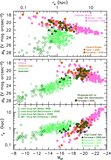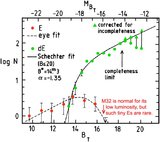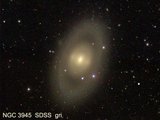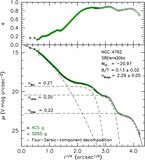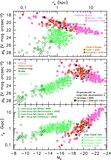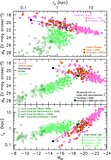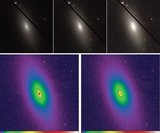Image Details
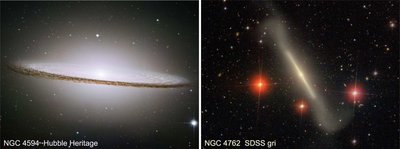
Caption: Figure 4.
Left: Hubble Heritage image ( http://hubblesite.org/newscenter/archive/releases/2003/28/image/a/) of the Sombrero Galaxy, NGC 4594. Right: SDSS gri color image of NGC 4762, the second-brightest S0 galaxy in the Virgo Cluster. These galaxies illustrate why bulge–disk decomposition is necessary. NGC 4594 is an Sa galaxy with B/ T = 0.93 ± 0.02 (Kormendy 2011b). Without photometric decomposition, we measure essentially only the bulge. We learn nothing about the disk. If an S0 version of this galaxy—e.g., NGC 3115—were viewed face-on, it would be difficult even to see the disk (Hamabe 1982), and whole-galaxy parameters would not measure it at all. In contrast, NGC 4762 is one of the "missing" late-type S0s: we find in this section that B/ T = 0.13 ± 0.02. Without photometric decomposition, we measure essentially only the disk. We learn nothing about the bulge. Moreover, the azimuthally averaged parameters used in F2006 are particularly difficult to interpret.
Copyright and Terms & Conditions
© 2012. The American Astronomical Society. All rights reserved.



